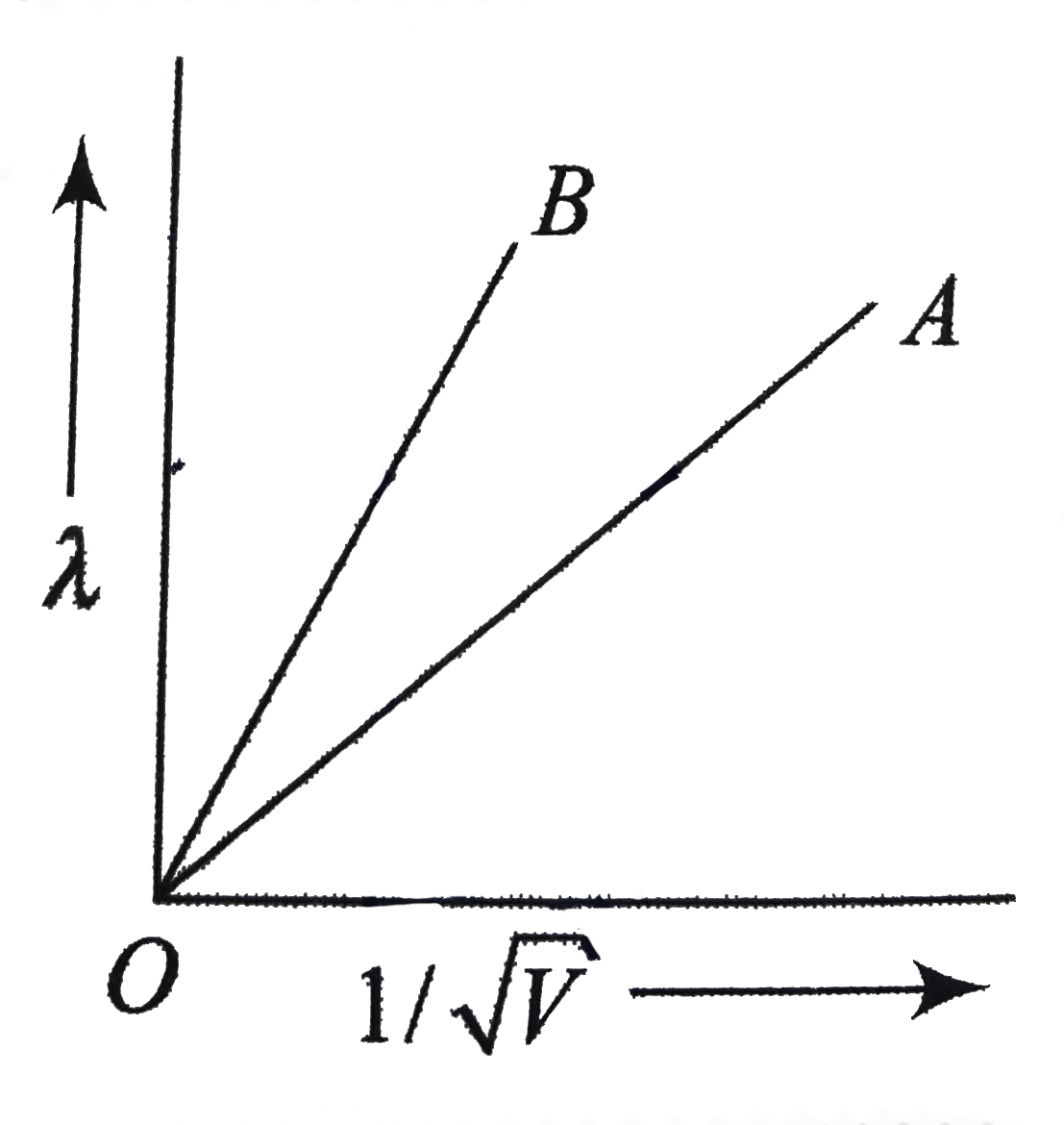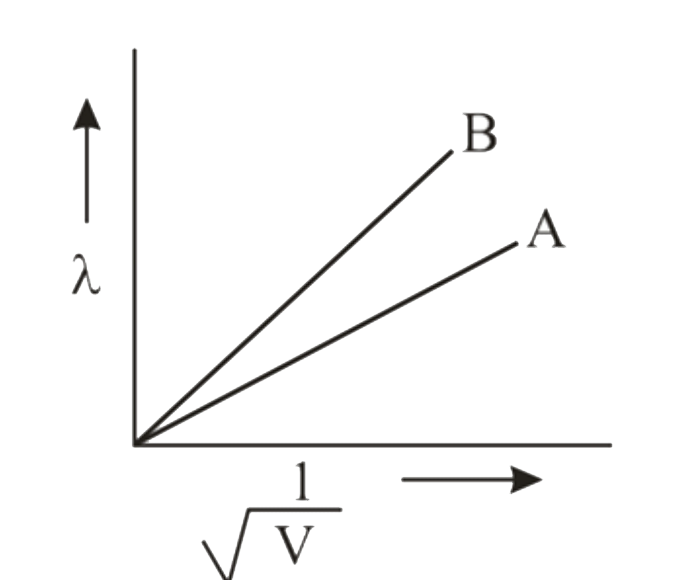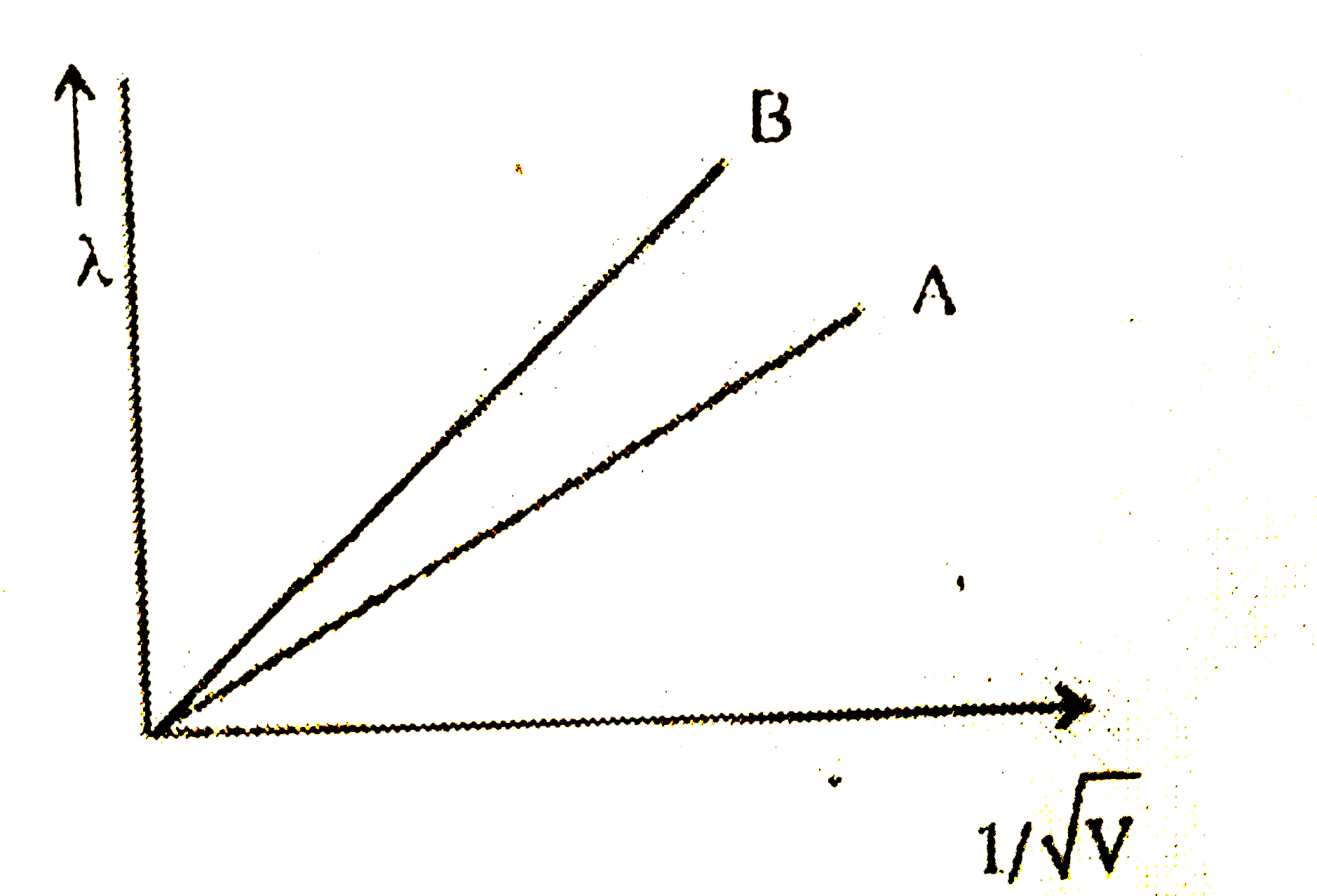The two lines A and B shown in figure are the graphs of the de Broglie wavelenght λ as a function of 1√V (V is the accerlerating potential) for two particles having the same charge.

Which of the two represents the particle of heavier mass ?
A
B
Both A and B
Data insuffcient
Slope α1√m
Topper's Solved these Questions
- BOOK - NARAYNACHAPTER - DUAL NATURE OF RADIATION AND MATTEREXERCISE - ASSERTION AND REASON15videos
DUAL NATURE OF RADIATION AND MATTER
- BOOK - NARAYNACHAPTER - DUAL NATURE OF RADIATION AND MATTEREXERCISE - EXERCISE - 335videos
DUAL NATURE OF RADIATION AND MATTER
- BOOK - NARAYNACHAPTER - CURRENT ELECTRICITYEXERCISE - Level 643videos
CURRENT ELECTRICITY
- BOOK - NARAYNACHAPTER - DUAL NATUREEXERCISE - LEVEL-II (H.W)17videos
DUAL NATURE
Similar Questions

The two lines A and B in fig. shoe the phot of de Broglie wavelength (λ) as a function of 1√V(V is the accelerating potential) for teo particles having the same charge. Which of the two represents the particle of heavier mass?View Solution
The two lines A and B in fig. shows the plot of de- Broglie wavelength (λ) as a function of 1√V(V is the accelerating potential) for the particles having the same charge. Which of the two represents the particle of heavier mass?View Solution
Knowledge Check
- Question 1 - Select One
de Broglie wavelengths of two particles A and B are plotted against (1√V) , where V is the potential on the particles. Which of the following relation is correct about the mass of the particles ?
 AmA=mBBmA>mBCmA<mBDmA≤mB
AmA=mBBmA>mBCmA<mBDmA≤mB - Question 2 - Select One
The de-Broglie wavelength λ associated with charged particle of charge q, mass m and potential difference V is
Ah√2mqVBh2√2mqVCh√mqVDh√2qV - Question 3 - Select One
de Broglie wavelengths of two particles A and B are plotted against (1√V) , where V is the potential on the particles. Which of the following relation is correct about the mass of the particles ?
 AmA=mBBmA>mBCmA<mBDmA≤mB
AmA=mBBmA>mBCmA<mBDmA≤mB
Two lines, A and B, in the plot given below show the variation of de-Broglie wavelength, λ versus 1/√V, where V is the accelerating potential difference, for two particles carrying the same charge. Which one of two represents a particle of smaller mass?
 View Solution
View SolutionTwo lines, A and B, in the plot given below show the variation of de-Broglie wavelength, λ versus 1/√V, where V is the accelerating potential difference, for two particles carrying the same charge. Which one of two represents a particle of smaller mass?
 View Solution
View SolutionPlot a graph showing variation of de-broglie wavelength λ versus 1/√V, where V is accelerating potential for two particle A and P carrying same charge but of masses m1andm2(m1>m2). Which one of the two represents a particle of smaller mass and why?
View SolutionPlot a graph showing variation of de-broglie wavelength λ versus 1/√V, where V is accelerating potential for two particle A and P carrying same charge but of masses m1andm2(m1>m2). Which one of the two represents a particle of smaller mass and why?
View SolutionPlot a graph showing variation of de-broglie wavelength λ versus 1/√V, where V is accelerating potential for two particle A and P carrying same charge but of masses m1andm2(m1>m2). Which one of the two represents a particle of smaller mass and why?
View Solution
